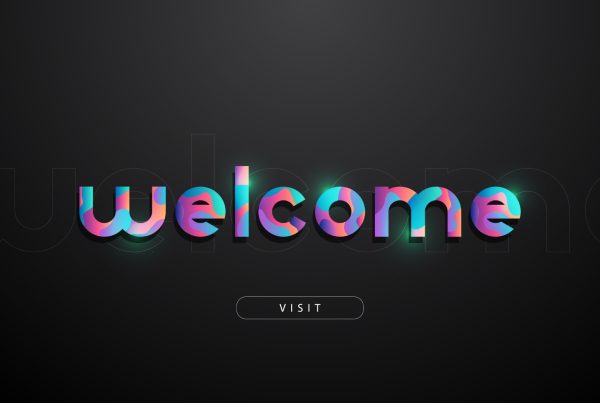Creating Engaging Visual Content: The Power of Graphic Design
In the fast-paced and visually-driven landscape of digital marketing, the saying “a picture is worth a thousand words” has never been more accurate. The power of engaging visual content cannot be overstated, and at the heart of this impactful visual storytelling is the art of graphic design.
In this article, we’ll delve into the transformative influence of visual content in digital marketing and branding, exploring the pivotal role that graphic design plays in crafting eye-catching social media graphics, infographics, and beyond.
The Visual Revolution in Digital Marketing
With attention spans dwindling and the online space flooded with information, the battle for audience engagement has become fiercer than ever. In this environment, visual content emerges as a beacon, cutting through the noise and capturing attention in a way that text alone often cannot. The visual revolution has reshaped digital marketing, emphasizing the importance of creating content that not only informs but captivates and resonates with the audience.
1. First Impressions Matter: The Role of Visuals in Branding
In the realm of digital marketing, where first impressions are formed in a matter of seconds, visuals are the front and center of brand identity. Graphic design elements such as logos, color schemes, and typography contribute to the immediate recognition and recall of a brand. Consistent and visually appealing branding fosters trust and loyalty, making it a cornerstone for successful digital marketing strategies.
2. Social Media Graphics: Crafting Shareable Moments
In the era of social media dominance, the significance of captivating social media graphics cannot be overstated. Whether it’s Instagram, Facebook, Twitter, or Pinterest, the visual elements of a post often determine its success. Graphic design transforms ordinary content into shareable moments, enabling brands to connect with their audience on a personal level. From attention-grabbing images to aesthetically pleasing layouts, graphic design is the driving force behind the social media thumbstopper.
3. Infographics: Simplifying Complexity
In the age of information overload, conveying complex data and concepts in a digestible format is a challenge. This is where infographics, a marriage of information and design, shine. Graphic designers play a pivotal role in translating intricate data into visually appealing and easy-to-understand infographics. Whether it’s breaking down statistics, explaining processes, or telling a narrative, infographics have become a staple in digital marketing strategies.

The Art and Science of Graphic Design
Graphic design is not just about making things look pretty; it’s a harmonious blend of art and science. It involves understanding the psychology of colors, the principles of design, and the nuances of user experience. A well-executed graphic design strategy considers the target audience, the message to be conveyed, and the platform through which it will be shared.
1. Color Psychology: Eliciting Emotions
Colors are powerful communicators, evoking emotions and associations that can profoundly impact the viewer. Graphic designers strategically choose colors based on the brand personality and the desired emotional response. For example, blue may convey trust and professionalism, while red might evoke energy and excitement. Understanding color psychology is a key aspect of graphic design for effective visual communication.
2. Typography: Beyond Words
The choice of fonts and typography is more than just a matter of aesthetics; it’s a crucial element of effective communication. Graphic designers carefully select fonts that align with the brand identity and enhance readability. Whether it’s a sleek and modern sans-serif font or a classic and traditional serif font, typography contributes to the overall visual language of a brand.
3. Composition and Layout: Guiding the Viewer’s Eye
The arrangement of visual elements on a page, known as composition or layout, is a fundamental aspect of graphic design. A well-thought-out composition guides the viewer’s eye, leading them through the content in a structured and intentional manner. Attention to details such as balance, alignment, and white space ensures that the design is visually appealing and easy to navigate.
The Impact on Engagement and Conversion
Engagement is the currency of digital marketing, and graphic design is a potent catalyst for boosting audience interaction. From social media posts to website banners, visually appealing content invites users to linger, click, and explore further. This engagement, when strategically channeled, can lead to conversions – the ultimate goal of any marketing campaign.
1. Building an Emotional Connection
Visual content has the unique ability to evoke emotions and build a personal connection with the audience. A well-designed visual piece can resonate with the viewer on a visceral level, fostering a sense of connection and loyalty to the brand. Whether it’s the warmth of a color palette or the relatability of an image, graphic design plays a pivotal role in shaping the emotional narrative of a brand.
2. Increasing Click-Through Rates
In the digital landscape, where users are bombarded with information, standing out is a constant challenge. Visually compelling graphics, especially those optimized for social media, have been shown to significantly increase click-through rates. A carefully crafted call-to-action button or an attention-grabbing image can make all the difference in prompting users to take the desired action.
3. Enhancing User Experience
User experience (UX) is a cornerstone of successful digital interactions. Graphic design, with its focus on aesthetics and usability, contributes to an enhanced user experience. From intuitive website navigation to visually pleasing interfaces, graphic designers play a crucial role in creating a seamless and enjoyable journey for the user.
Tips for Maximizing the Power of Graphic Design in Digital Marketing
Now that we’ve explored the transformative impact of graphic design in digital marketing, let’s delve into some practical tips for maximizing its power:
1. Consistency is Key
Maintain a consistent visual identity across all digital platforms. This includes using the same color palette, fonts, and design elements to reinforce brand recognition.
2. Prioritize Mobile Optimization
Given the prevalence of mobile usage, ensure that your graphic design is optimized for various devices and screen sizes. What looks stunning on a desktop should translate seamlessly to a smartphone screen.
3. Tell a Story
Use graphic design to tell a cohesive and compelling brand story. Whether through a series of social media graphics or an infographic, narrative consistency builds a stronger connection with the audience.
4. Understand Your Audience
Graphic design is not one-size-fits-all. Understand your target audience’s preferences, demographics, and behaviors to tailor visual content that resonates with them.
5. Stay Trendy but Timeless
While it’s essential to stay current with design trends, aim for a balance between trendy and timeless. This ensures that your visual content remains relevant over an extended period.
6. Test and Iterate
Digital marketing is dynamic, and what works today might need adjustment tomorrow. Continuously test the performance of your visual content and be willing to iterate based on data and feedback.
Conclusion
In the ever-evolving landscape of digital marketing, the role of graphic design as a catalyst for engagement, storytelling, and brand identity cannot be overstated. As users increasingly gravitate towards visual content, the power of a well-designed image, infographic, or social media graphic becomes a formidable force in capturing attention and driving conversions. By understanding the principles of graphic design and strategically incorporating them into digital marketing strategies, brands can elevate their online presence, forge meaningful connections with their audience, and stand out in the competitive digital space.








